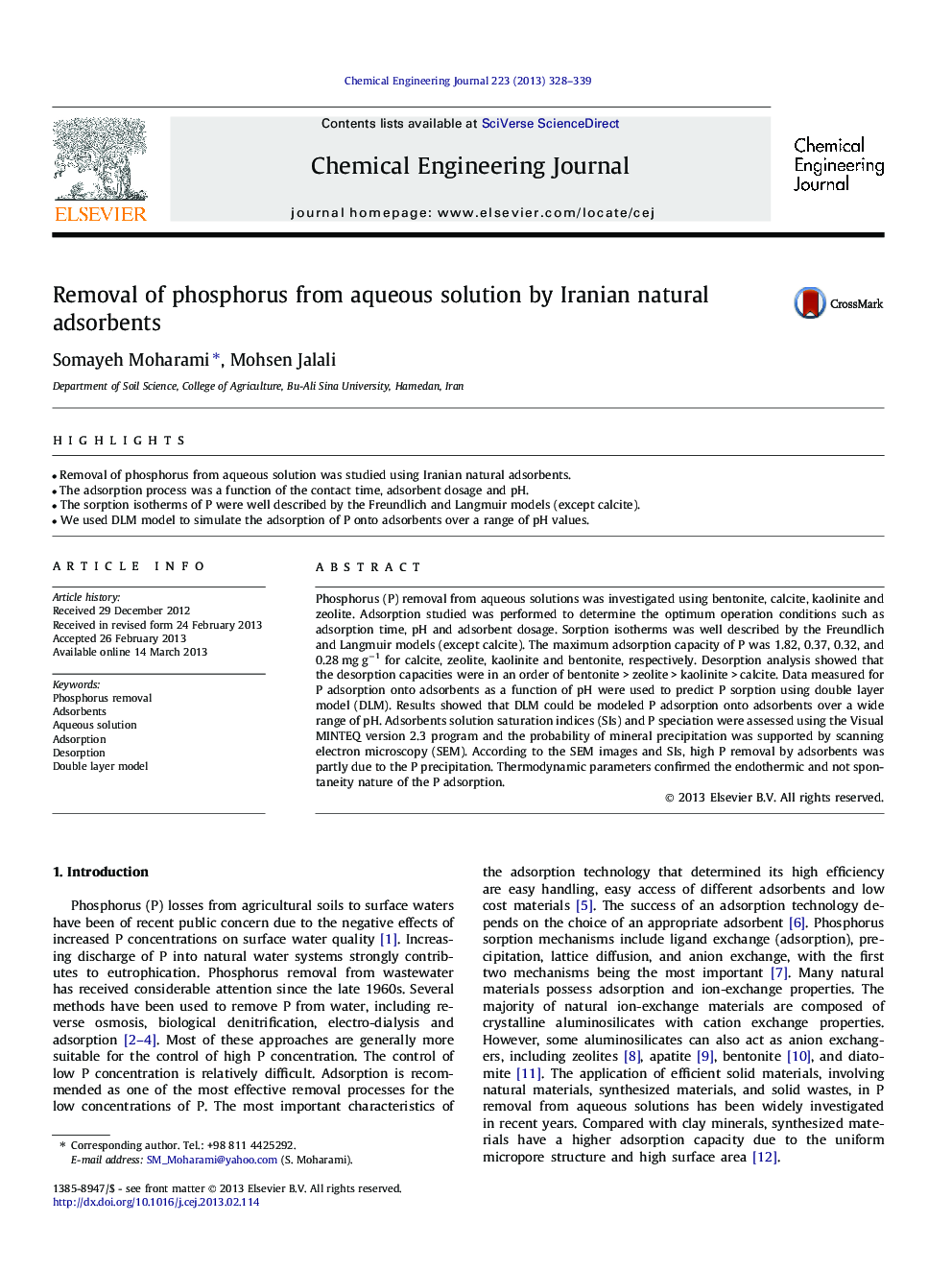| Article ID | Journal | Published Year | Pages | File Type |
|---|---|---|---|---|
| 6588023 | Chemical Engineering Journal | 2013 | 12 Pages |
Abstract
Phosphorus (P) removal from aqueous solutions was investigated using bentonite, calcite, kaolinite and zeolite. Adsorption studied was performed to determine the optimum operation conditions such as adsorption time, pH and adsorbent dosage. Sorption isotherms was well described by the Freundlich and Langmuir models (except calcite). The maximum adsorption capacity of P was 1.82, 0.37, 0.32, and 0.28 mg gâ1 for calcite, zeolite, kaolinite and bentonite, respectively. Desorption analysis showed that the desorption capacities were in an order of bentonite > zeolite > kaolinite > calcite. Data measured for P adsorption onto adsorbents as a function of pH were used to predict P sorption using double layer model (DLM). Results showed that DLM could be modeled P adsorption onto adsorbents over a wide range of pH. Adsorbents solution saturation indices (SIs) and P speciation were assessed using the Visual MINTEQ version 2.3 program and the probability of mineral precipitation was supported by scanning electron microscopy (SEM). According to the SEM images and SIs, high P removal by adsorbents was partly due to the P precipitation. Thermodynamic parameters confirmed the endothermic and not spontaneity nature of the P adsorption.
Related Topics
Physical Sciences and Engineering
Chemical Engineering
Chemical Engineering (General)
Authors
Somayeh Moharami, Mohsen Jalali,
